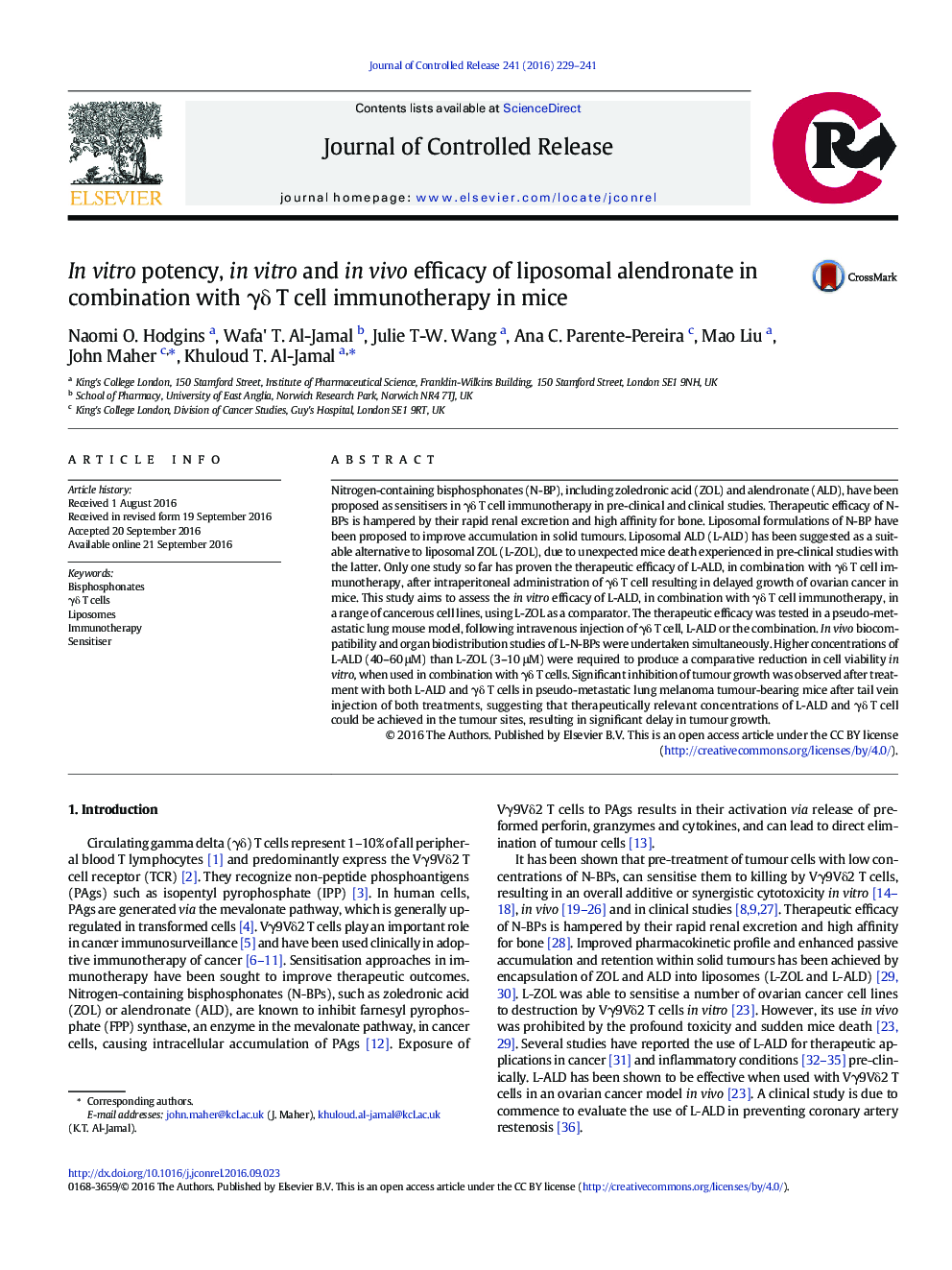| Article ID | Journal | Published Year | Pages | File Type |
|---|---|---|---|---|
| 5433909 | Journal of Controlled Release | 2016 | 13 Pages |
Nitrogen-containing bisphosphonates (N-BP), including zoledronic acid (ZOL) and alendronate (ALD), have been proposed as sensitisers in γδ T cell immunotherapy in pre-clinical and clinical studies. Therapeutic efficacy of N-BPs is hampered by their rapid renal excretion and high affinity for bone. Liposomal formulations of N-BP have been proposed to improve accumulation in solid tumours. Liposomal ALD (L-ALD) has been suggested as a suitable alternative to liposomal ZOL (L-ZOL), due to unexpected mice death experienced in pre-clinical studies with the latter. Only one study so far has proven the therapeutic efficacy of L-ALD, in combination with γδ T cell immunotherapy, after intraperitoneal administration of γδ T cell resulting in delayed growth of ovarian cancer in mice. This study aims to assess the in vitro efficacy of L-ALD, in combination with γδ T cell immunotherapy, in a range of cancerous cell lines, using L-ZOL as a comparator. The therapeutic efficacy was tested in a pseudo-metastatic lung mouse model, following intravenous injection of γδ T cell, L-ALD or the combination. In vivo biocompatibility and organ biodistribution studies of L-N-BPs were undertaken simultaneously. Higher concentrations of L-ALD (40-60 μM) than L-ZOL (3-10 μM) were required to produce a comparative reduction in cell viability in vitro, when used in combination with γδ T cells. Significant inhibition of tumour growth was observed after treatment with both L-ALD and γδ T cells in pseudo-metastatic lung melanoma tumour-bearing mice after tail vein injection of both treatments, suggesting that therapeutically relevant concentrations of L-ALD and γδ T cell could be achieved in the tumour sites, resulting in significant delay in tumour growth.
Graphical abstractDownload high-res image (215KB)Download full-size image
